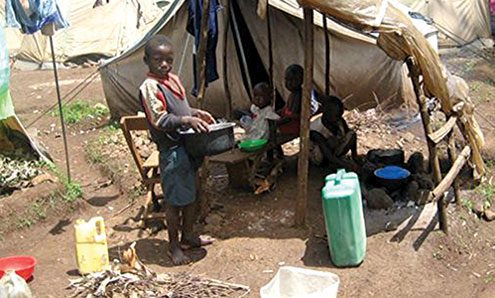Salvation Army in Uganda continues to help villagers affected by landslides.

Heavy rains in March 2010 caused devastating landslides in Uganda, killing hundreds and making thousands homeless. The Salvation Army continues to assist victims of the disaster.
On March 1, 2010, a landslide on the slopes of Mount Elgon in eastern Uganda destroyed the village of Nametsi. At least 350 people were killed and the Ugandan Military is still looking for bodies. An excavator had to be brought in by helicopter because the area is not accessible by road. In late August—almost six months after the disaster—they found the 103rd and 104th bodies. One was a child and the other a nurse who had worked in the village clinic. A trading center in the village held many of the bodies because children on their way home from school had sought refuge there from the heavy rain.
The survivors from Nametsi moved away from the slopes as did people from neighboring villages also thought to be in danger. Since then more than 8,000 people have been living in Bulucheke Camp, while others stay with relatives or host families.
The Salvation Army met with representatives of the Ugandan Red Cross, which had been put in charge of camp management and distributions—to discuss the people’s needs. David, the Red Cross distribution manager, said that food provided by The Salvation Army came just in time—food was scarce and people were becoming desperate.
The Ugandan Government is considering relocating the people to another area, 500 kilometers away from the place of origin, where they will have to start their lives from scratch.
The time frame for the relocation is not confirmed, but The Salvation Army hopes to have the resources to continue to play a role—assisting the people in settling down and starting new livelihoods when the time comes.
Donations can be made to the “Africa Disaster Fund” at salvationarmy.org.Report by Damaris Frick, International Emergency Services











